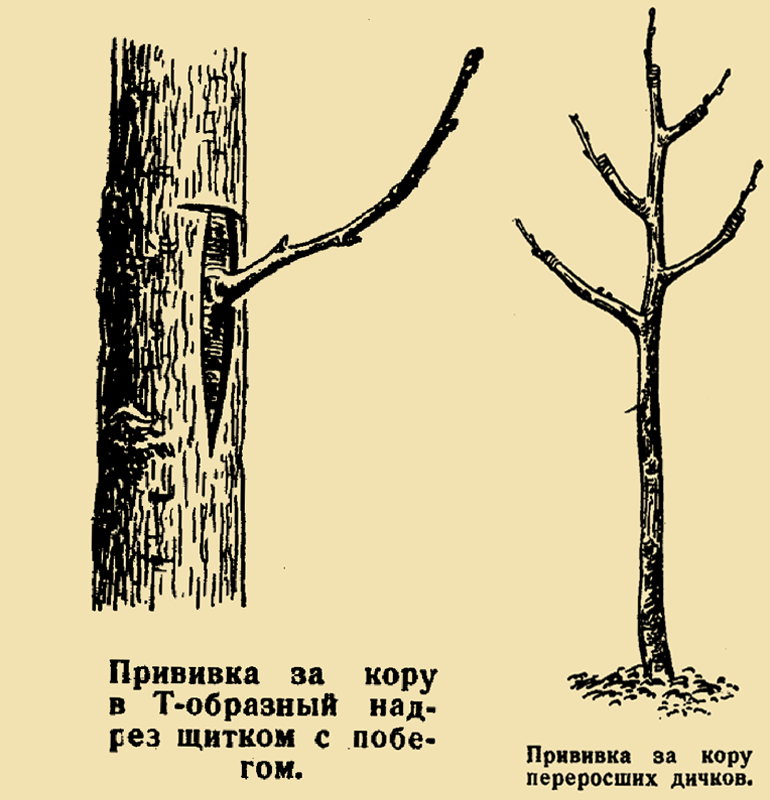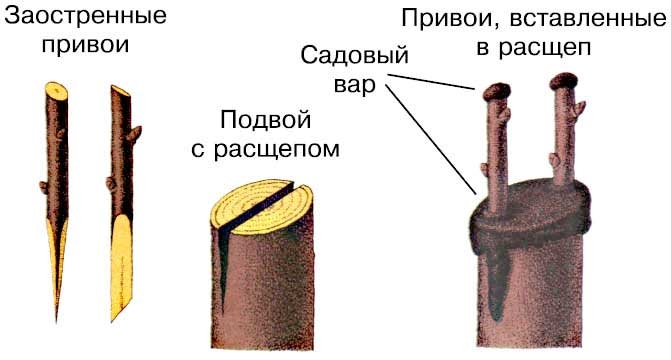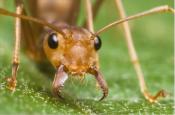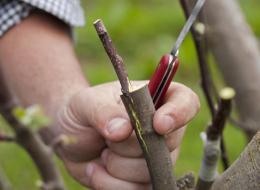Search
Login
Spring vaccination of fruit trees, methods of vaccination, do the vaccination correctly
Vaccination of fruit trees is practiced for different purposes - to improve the taste of the fruit, increase the resistance of the tree to disease or increase productivity. The most hardy seedlings get exactly this method, now available for amateur gardeners.
Content
- Getting started video
- Simple spring vaccination
- Improved vaccination
- Side cut grafting
- Vaccination for bark video
- Split vaccine video
Getting started
Spring grafting of fruit trees is used to improve fruit quality and tree endurance; two varieties can be grafted onto one fruit tree, saving space in the garden for other plants. Before starting work, it is important to know not only the methods of vaccination, but also the general rules that allow you to get a positive result. For example, the total vaccination time is no more than 5 minutes, garden varnish is putty immediately after the end of the strapping.

The knife for spring copying must be sharp, the slices are made in smooth movements. The grafting time of cuttings for young trees is 30 days, for adults - up to one year. The graft for the apple tree, as well as for any other fruit tree, can be of any variety, but always from a healthy tree. As for the apple trees, it is recommended to start with the selection and planting of a stock for the conclusion of a productive variety; the best stock for an apple tree is a seedling of a wild or Chinese apple tree.

Vaccination is carried out in early spring, when the temperature rises above 10 degrees (late March-April). The day should be calm and not hot, the best time for vaccination is morning or evening.
For work you will need:
- Vaccination knife - used during all types of grafting grafts, convenient for bending the bark
- Chisel and hammer - for splitting
- Polyethylene tape, insulating tape - for binding cuttings
- Pruning shears pruner
- Garden var - for putty grafted place to avoid infection.
Simple spring vaccination
The standard copulation is to connect the stock and scion along oblique sections 3-4 cm long, the scion and stock should be the same thickness. The stem is grafted necessarily to the skeletal branch, the place for the stem is cleaned with water and cut at an oblique angle.

A graft with 2–3 buds is sufficient for grafting; cuttings covered with mold, with damaged bark and swollen buds are not suitable for grafting. You can make a fresh cut on the scion by secateurs, you need to do this carefully so that you do not have to trim the length of the cut to the size of the cut of the stock. Combining the scion and rootstock sections, we connect them with a tape, we cover the upper cut of the cuttings with garden var.
Improved vaccination
The grafting differs in the shape of the slice; the grafted stalk adheres more tightly to the stock and takes root better. As with the usual method, oblique slices are made, and in the middle of the slices, a graft knife is used to cut a straight cut of about 1.5 cm. After preparation, the stock and scion are joined with the obtained tongues, not forgetting to correctly connect them with oblique slices. The vaccination ends with tying with a ribbon and putty with garden var.

a - improved copulation with the tongue, b - in the cleft, c - in the lateral incision with the simultaneous removal of the branch above the incision, d - for the bark.
Side cut grafting
Vaccination in a lateral section is recommended for plants after an unsuccessful summer vaccination, for re-grafting of young fruit trees and correcting one-sided crowns (creating branches).

Branch - stock is cut 8 cm above the proposed site of vaccination, the site of vaccination will be the side. The lateral side is cut with an oblique angle of 20 degrees by 5 cm, its depth will be 2 cm. The graft is cut at an angle from two sides, so that a wedge is obtained, an incision is made under the kidney, 4 cm long. Please note that the cuts should be asymmetrical on the scion, otherwise, the rootstock bark will not cover the stalk tightly. After combining the cuttings with the stock, the vaccine is tied from top to bottom with a ribbon, not open places are covered with garden varnish.
Vaccination for bark
This method has a significant drawback - the first year the stem does not hold firmly on the stock; the probability of damage to a new shoot in a strong wind is high. There is a solution that will help to avoid an escape fracture - for the first 2-3 years, the grafted graft is tied to a support.

On the side of the rootstock with a knife, make a vertical incision along the bark 4-5 cm long, the incised bark is bent. The handle is cut off at an angle as in the usual graft; a small protrusion (grafting with a saddle) is made on a thick graft to improve the contact of the bark with the graft. If the bark of the stock is thickened and the scion is thin, you can not make an incision, but simply separate the bark with an awl and insert the stalk in your pocket.
Split vaccine
Vaccination in the split is done during the swelling of the kidneys, this type is recommended for re-vaccination of young trees. First you need to choose the place of grafting, it will be a large branch without branches at a distance of 10 cm. After sawing, the branches are cut with a depth of 5 cm using a chisel and a hammer, then a screwdriver or any wedge is inserted into the cleavage and the cleavage is expanded to 5 mm, expanding the tool removed after installing scions. 2-4 cuttings are inserted into the cleft depending on the volume of the branch.

Each stalk is cut in the form of a symmetrical wedge 4 cm long after two buds, for better contact with the stock on the stalks make ledges on both sides of 2 mm. The last step is tying, glossing over the upper sections of cuttings and splits.





